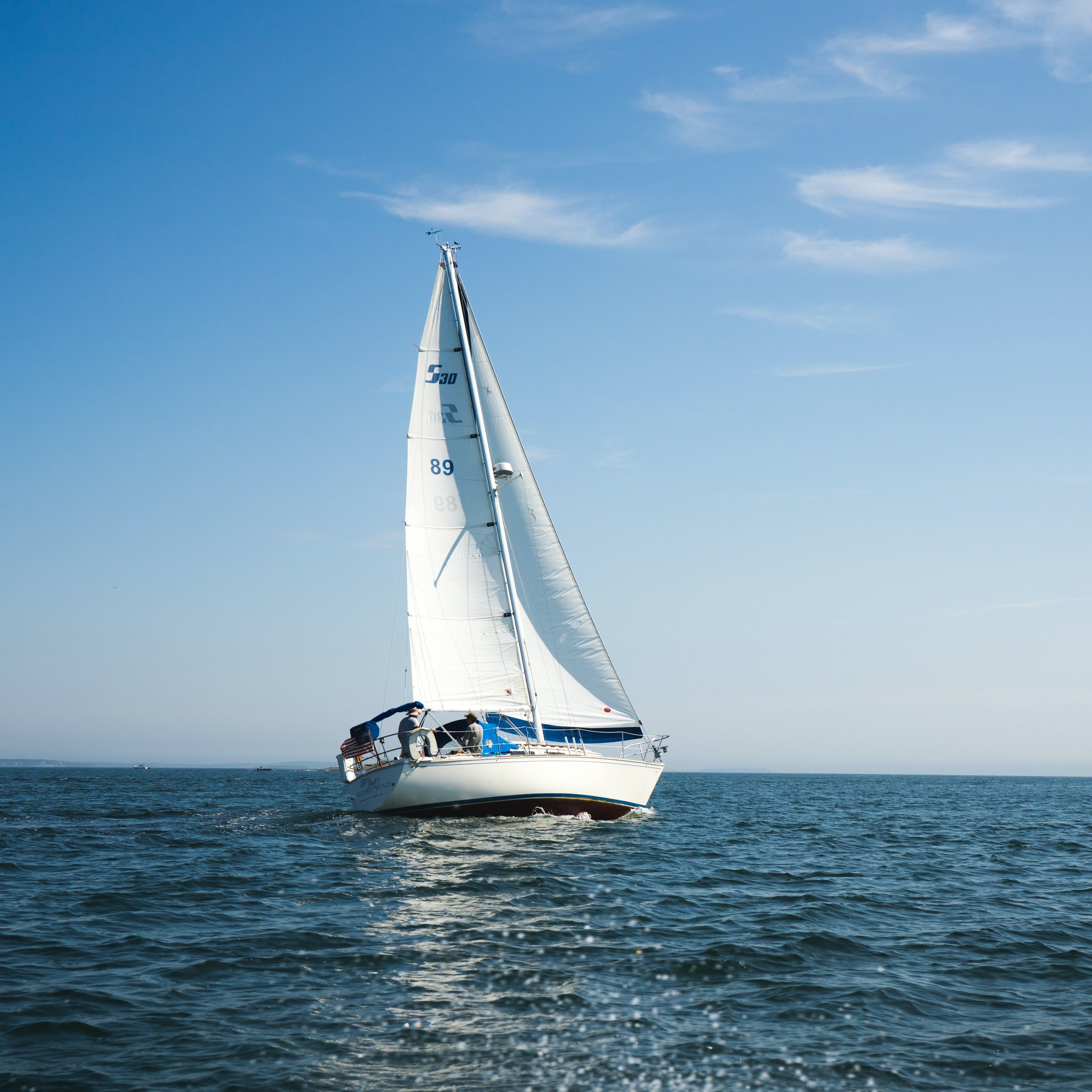What is the maximum visibility at sea?
Generally, an average height person can see up to 4.5 kilometers (2.8 miles) at sea level. This is the best possible visibility at sea you can have, if your eyes are six feet above sea level and the weather is great.
However, things are actually a lot more complicated than that.
Visibility: Nominal range and graphic range
There are two ranges of visibility: the nominal range and the graphic range. The nominal range determines the maximum visibility of an object in the best possible conditions. For example, the light of a lighthouse could have a 21-kilometer (13-mile) nominal range of visibility at night.
The graphic range, on the other hand, is much smaller. It’s the distance from which you can see something. You may be able to see the light from 11 kilometers (7 miles) or even 3 kilometers (2 miles) away, depending on the circumstances.
What we usually call “visibility”, is the graphic range. This is limited by the curvature of the Earth and affected by the height at which your eyes are. So you will have greater visibility from the deck of a tanker than from the cockpit of a sailboat.
Your range will also be influenced by the size and height of the object you are looking at. For example, a tall lighthouse on top of a cliff will be visible from farther away than a small motorboat.
So visibility is the combination of the graphic range and the nominal range. Your graphic range may be 4.5 kilometers (2.8 miles) on a clear night, standing on the deck of your motorboat. However, you may be able to see the light of a 15-meter (50 feet) high lighthouse perched on a low rock from a distance of 23 kilometers (14 miles).
Get the free DECKEE boating app
DECKEE helps you plan, prepare and explore the waterways with confidence.
Download app
Weather conditions
There’s one more factor to consider. Visibility at sea is also greatly affected by weather. Even if you are on a big tanker at sea, looking towards a tall lighthouse onshore, your range could be very small in certain conditions.
Visibility varies, depending on the number of aerosols in the air (water droplets, ice crystals, dust, and more), as these reflect incoming light. Let’s look at the range possible in different weather.
Sunny and clear skies
This is the best possible scenario. The sun is shining, there are few clouds in the sky, and there are no smoke or pollution in the air. In this case, you will have the maximum visibility determined by the combination of the graphic and nominal range.
Fog and mist
When it’s foggy, there is a high number of water droplets in the air. Visibility in mist varies between 1 and 5 kilometers (0.6 to 3.1 miles), while in fog it’s usually under 1 kilometer (0.6 miles).
Haze
Haze happens when the air contains a lot of dry particles - dust or smoke, often produced by pollution. Normally, visibility is around 5 kilometers (3.1 miles) or more in haze.
Rain
Rain reduces visibility, but typically less than fog, as there are fewer water droplets in the air. Moderate rain will generally lead to standard 4.5 kilometers (2.8 miles) visibility. However, drizzle, which carries smaller water droplets, often brings fog, so the range can reduce to as little as 1.5 kilometers (0.9 miles).
Snow and hail
Snow crystals reflect more light than water droplets, so the visibility can easily drop to 1 kilometer (0.6 miles) when it’s snowing or hailing.
Additional factors
Finally, visibility at sea is also affected by the time of day, water and air temperature, humidity levels, and wind speed. There is a lot to keep in mind.
How to use this knowledge when boating
When you’re out on the water, don’t simply assume that you have a 4.5 kilometer (2.8 mile) visibility range at all times. Assess the weather conditions, the height at which your eyes are above the sea level, and the size and height of the object you are looking at. What you see can be deceiving. For example, a ship can look farther than it is, while land can seem closer.
It’s not easy to determine your visibility range while boating, but knowing that it isn’t necessarily 4.5 kilometers will help you stay alert. Keep a sharp lookout at all times, but be especially sharp-eyed when conditions deteriorate.
If you have AIS on board, you will be able to determine how far a ship or lighthouse is from you. By looking at the instrument in various conditions and measuring different objects, you will start to get a feel for distances in diverse circumstances.
Download the Deckee app from the App Store or Google Play to stay safe on the water. Even without AIS or data, you can measure the distance between your location and a point on land or a marker on the Deckee map.
Get the free DECKEE boating app
DECKEE helps you plan, prepare and explore the waterways with confidence.
Download app

